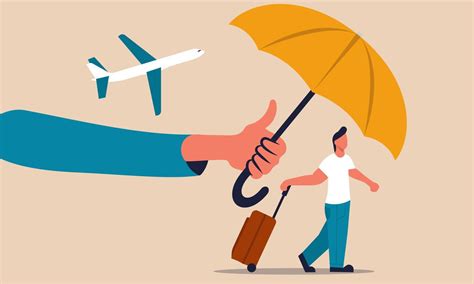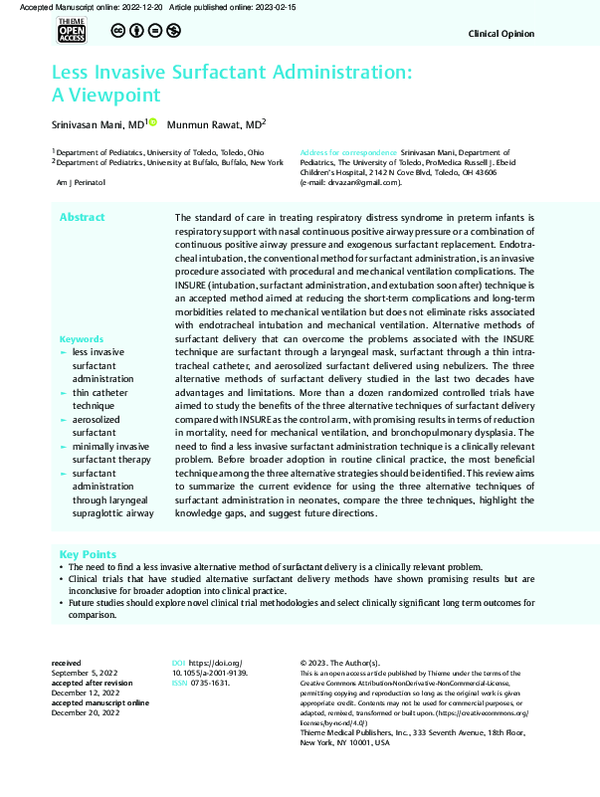Insure

In today's dynamic world, insurance has evolved from a mere safety net to a complex web of financial protection and risk management. From personal life milestones to global economic shifts, insurance plays a pivotal role in safeguarding individuals, businesses, and societies against unforeseen events. This article delves into the intricate world of insurance, exploring its diverse facets, historical evolution, and its profound impact on modern life.
Understanding Insurance: A Comprehensive Overview

Insurance is a financial tool designed to protect individuals and entities from financial loss due to various events, including accidents, illnesses, natural disasters, and more. At its core, insurance is a contract, or policy, between an individual or entity (the policyholder) and an insurance company. This contract outlines the terms and conditions under which the insurance company agrees to compensate the policyholder for specific losses, damages, or liabilities in exchange for a premium payment.
The concept of insurance is built on the principle of risk pooling, where a large group of individuals or entities contribute premiums to a common pool. When a covered event occurs, the insurance company uses the pooled funds to provide financial protection to the affected policyholders. This mechanism ensures that the financial burden of an unexpected event is shared among a large community, thereby reducing the impact on any single individual or entity.
Types of Insurance
The insurance industry offers a wide array of policies to cater to diverse needs and risks. Here’s an overview of some of the most common types of insurance:
- Life Insurance: This type of insurance provides financial protection to beneficiaries upon the death of the policyholder. It is often used to ensure financial stability for loved ones, cover funeral expenses, or pay off debts.
- Health Insurance: Health insurance covers medical expenses, including doctor visits, hospital stays, prescription drugs, and sometimes even preventative care. It plays a crucial role in ensuring access to healthcare services without the burden of high costs.
- Property Insurance: Property insurance, such as home or auto insurance, protects against damage or loss to physical assets. This can include damage from natural disasters, theft, or accidents.
- Liability Insurance: Liability insurance protects policyholders from financial loss due to claims of negligence or other liabilities. It is often required for businesses and can also be beneficial for individuals, especially those with significant assets.
- Business Insurance: Businesses face unique risks, and insurance policies like commercial property insurance, product liability insurance, and professional liability insurance (also known as errors and omissions insurance) are designed to mitigate these risks.
- Travel Insurance: Travel insurance provides coverage for various travel-related incidents, including trip cancellations, medical emergencies while abroad, and lost or stolen luggage.
These are just a few examples of the many types of insurance available. The specific policies and coverage options can vary widely depending on the region, industry, and individual or business needs.
The Evolution of Insurance
The concept of insurance has ancient roots, dating back to the times of Babylonian and Phoenician traders who would share the risks of their cargo shipments. Over the centuries, insurance practices evolved, with the establishment of the first insurance company in England in the early 17th century. This company, known as the “Insurance Office,” offered fire insurance policies, marking a significant milestone in the history of insurance.
In the United States, the insurance industry has played a crucial role in the nation's economic development. The first American insurance company, founded in 1735, was the Philadelphia Contributionship for the Insurance of Houses from Loss by Fire. This company, led by Benjamin Franklin, pioneered the concept of mutual insurance, where policyholders were also shareholders in the company.
Throughout the 19th and 20th centuries, insurance became increasingly sophisticated and specialized. The introduction of actuarial science and risk assessment methods revolutionized the industry, allowing insurance companies to more accurately predict and manage risks. This led to the development of a wide range of insurance products tailored to specific needs and industries.
Today, the insurance industry is a global behemoth, with trillions of dollars in premiums and assets. It plays a vital role in stabilizing economies, providing a safety net for individuals and businesses, and contributing to the overall financial resilience of societies.
The Impact of Insurance on Modern Life
Insurance has become an integral part of modern life, offering a sense of security and peace of mind in an unpredictable world. Here’s a closer look at its impact:
- Financial Protection: Insurance provides a financial safety net, ensuring that individuals and businesses can recover from unforeseen events without suffering catastrophic financial losses.
- Healthcare Access: Health insurance plays a critical role in making healthcare services more accessible and affordable. It allows individuals to seek necessary medical care without the fear of crippling medical bills.
- Risk Mitigation: Insurance policies help individuals and businesses manage and mitigate risks effectively. This allows them to focus on their core activities without constant worry about potential liabilities or losses.
- Economic Stability: The insurance industry contributes significantly to economic stability by providing a mechanism for spreading and managing risks. It also serves as a major investor in various sectors, promoting economic growth.
- Social Welfare: Insurance, particularly social insurance programs, plays a vital role in social welfare. It provides a safety net for vulnerable populations, ensuring access to essential services and support during difficult times.
Insurance in Practice: Real-World Examples

To understand the practical applications of insurance, let’s explore some real-world scenarios where insurance has made a significant impact:
Scenario 1: Homeowner’s Insurance
Imagine a family living in a suburban neighborhood. One night, a severe thunderstorm strikes, causing a tree to fall on their home. The damage is extensive, requiring repairs to the roof, walls, and interior. Without homeowner’s insurance, the family would be facing a substantial financial burden to cover these repairs. However, with a comprehensive homeowner’s insurance policy, the insurance company steps in to cover the costs, ensuring the family can repair their home without dipping into their savings or taking on debt.
Scenario 2: Medical Insurance for Chronic Illness
Consider a young adult diagnosed with a chronic illness like diabetes. The cost of ongoing medical treatment, including regular doctor visits, medications, and monitoring equipment, can quickly become unaffordable. With health insurance, however, the individual can access the necessary medical care without financial strain. The insurance company covers a significant portion of the medical expenses, ensuring the person’s condition is managed effectively and their quality of life is maintained.
Scenario 3: Business Liability Insurance
A small business owner operates a local cafe. One day, a customer slips and falls on a wet floor, injuring themselves. The customer decides to sue the cafe for negligence. Without liability insurance, the business owner would have to cover the legal costs and any potential damages awarded to the customer. This could potentially bankrupt the business. However, with liability insurance in place, the insurance company provides legal defense and covers any damages awarded, protecting the business owner’s financial stability.
Scenario 4: Travel Insurance for Emergency Medical Care
A family plans a dream vacation to an exotic location. Unfortunately, during their trip, one of the family members becomes seriously ill and requires immediate medical attention. Without travel insurance, the family would be faced with the daunting task of finding suitable medical care and paying for it out of pocket, which could be prohibitively expensive. With travel insurance, however, the insurance company coordinates with local medical providers, ensuring the family member receives the necessary care, and covering a significant portion of the medical expenses.
The Future of Insurance: Innovations and Trends
The insurance industry is continuously evolving, driven by technological advancements, changing consumer preferences, and emerging risks. Here’s a glimpse into the future of insurance:
Technological Innovations
The insurance industry is embracing technology to enhance its operations and provide better services. Some key technological trends include:
- Artificial Intelligence (AI): AI is being used for risk assessment, claims processing, and fraud detection. It can analyze vast amounts of data to identify patterns and make more accurate predictions, improving the efficiency and accuracy of insurance processes.
- Blockchain Technology: Blockchain offers secure and transparent record-keeping, which can be beneficial for insurance contracts and claims processing. It can reduce fraud, improve data integrity, and streamline processes.
- Telematics and IoT: In the automotive insurance sector, telematics devices are being used to track driving behavior, allowing for more accurate risk assessment and personalized insurance rates. Similarly, Internet of Things (IoT) devices can monitor home environments, providing data for home insurance policies.
Changing Consumer Preferences
Consumers are increasingly seeking personalized and flexible insurance options. They want insurance policies that cater to their specific needs and provide greater control over coverage and premiums. Insurance companies are responding by offering more customizable policies and using data analytics to provide tailored recommendations.
Emerging Risks and Coverage
The insurance industry is also adapting to new and emerging risks, such as cyber attacks, climate change-related disasters, and pandemics. Insurance companies are developing new policies and risk management strategies to address these challenges, ensuring that individuals and businesses have the necessary protection in an ever-changing world.
| Industry Sector | Emerging Risk | Insurance Solution |
|---|---|---|
| Healthcare | Telehealth Services | Telehealth Insurance Policies |
| Automotive | Autonomous Vehicles | Autonomous Vehicle Insurance |
| Climate Change | Extreme Weather Events | Climate Change Adaptation Insurance |

Conclusion: Insurance as a Cornerstone of Modern Society
Insurance is an indispensable component of modern life, offering protection, peace of mind, and financial stability in an uncertain world. From its ancient origins to its modern-day sophistication, insurance has evolved to meet the diverse needs and risks of individuals and businesses. As the world continues to change and new challenges emerge, the insurance industry will remain a vital force, adapting and innovating to provide the necessary protection and support for a resilient future.
How does insurance work in practice? Can you provide a real-life example?
+Insurance works by pooling resources from a large group of policyholders to create a fund that can be used to compensate those who suffer covered losses. For instance, imagine a group of 100 people, each contributing 100 to an insurance fund. If one of them experiences a covered loss worth 1,000, the insurance company can pay for the loss using the pooled funds. This way, the financial burden is shared, and the affected individual receives the necessary support.
What are some common misconceptions about insurance?
+One common misconception is that insurance is a one-size-fits-all solution. In reality, insurance policies are highly customizable, allowing individuals and businesses to choose coverage that aligns with their specific needs and risks. Another misconception is that insurance is only necessary for major events. While it’s true that insurance provides protection for significant losses, it also offers coverage for smaller, everyday risks, ensuring financial stability.
How has technology impacted the insurance industry?
+Technology has revolutionized the insurance industry, making it more efficient and customer-centric. AI and machine learning are used for risk assessment and claims processing, improving accuracy and speed. Telematics and IoT devices provide real-time data for more personalized insurance policies. Additionally, digital platforms and mobile apps have made it easier for customers to manage their policies and file claims.



